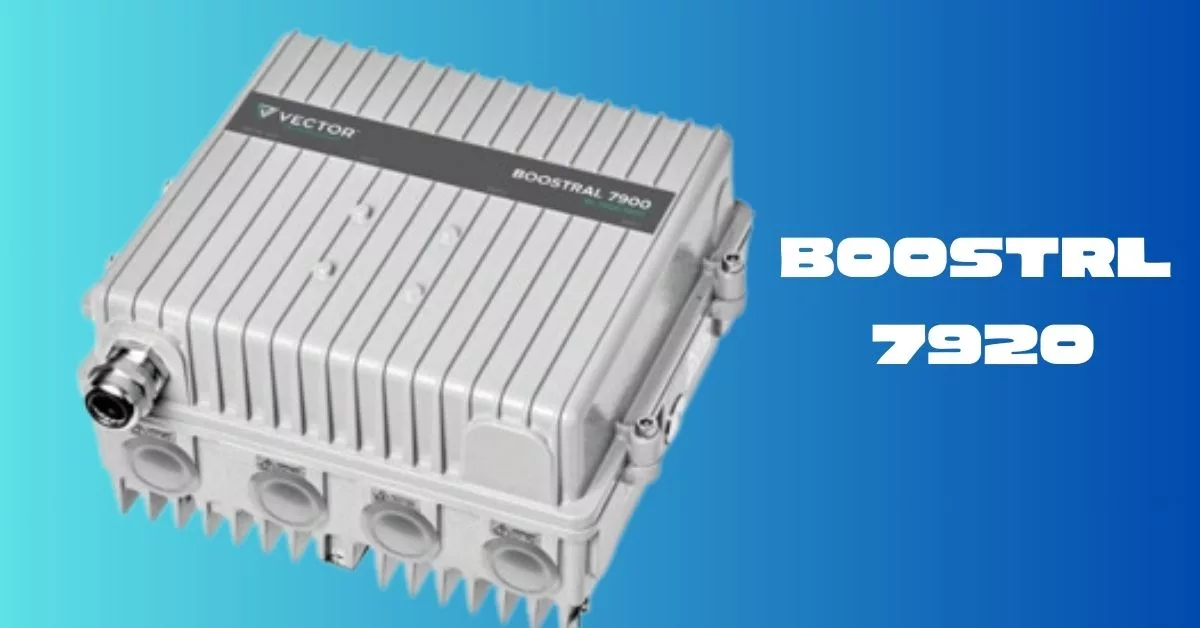In the fast-paced world of technology, where seamless connectivity is non-negotiable, innovations like BOOSTRAL 7920 are rewriting the rules. This powerful 1.2 GHz Segmentable optical Node 2×4 is a game-changer in the industry, offering cutting-edge features and specifications that set it apart from the competition.
BOOSTRAL 7920 Features
1.2 GHz Technology
The heart of BOOSTRAL 7920 lies in its advanced 1.2 GHz Technology. This high-frequency capability ensures unparalleled data transmission speed, making it ideal for modern applications demanding rapid data exchange.
200 MHz Technology
In addition to the remarkable 1.2 GHz capability, BOOSTRAL 7920 boasts 200 MHz Technology. This dual-frequency feature enhances versatility, catering to a wide range of communication needs with efficiency.
GaN Technology
One of the standout features is the integration of GaN (Gallium Nitride) Technology. GaN’s superior power efficiency and thermal performance contribute to BOOSTRAL 7920’s overall reliability and longevity.
Active Outputs and Passive Splitting
They offers not only 2 active outputs but also the flexibility to expand to 4 with passive splitting. This adaptability ensures scalability, catering to diverse network setups and configurations.
Electronic Control and VMC (VECTOR Mobile Commander)
Electronic control allows precise adjustments, optimizing performance. The VECTOR Mobile Commander (VMC) provides remote management, enhancing operational efficiency and reducing maintenance costs.
Electronic Adjustment and NMS Transponder
Fine-tune BOOSTRAL 7920 according to specific network requirements with electronic adjustment. The NMS (Network Management System) transponder adds a layer of intelligence, facilitating seamless integration into existing networks.
VECTOR Ingress Guard (VIG)
The VIG technology ensures a clean and interference-free signal. This is pivotal in maintaining signal quality, especially in environments with potential sources of signal ingress.
Integration of Optical Passives
It goes beyond the basics by integrating optical passives. This innovative approach streamlines the node’s architecture, enhancing overall efficiency and reducing the need for additional components.
GREEN Mode
Environmental consciousness meets cutting-edge technology with it’s GREEN mode. This feature not only contributes to a sustainable future but also brings energy efficiency to the forefront.
BOOSTRAL 7920 Specifications
Bandwidth: 1.2 GHz / 200 MHz
The impressive bandwidth of BOOSTRAL 7920 ensures a wide coverage area and supports high-speed data transfer, meeting the demands of modern communication networks.
Optical Input Power Range: -9.9 – 2 dBm
A critical aspect, the optical input power range, ensures optimal performance across varying signal strengths, providing stability in different network conditions.
Optical ACG Range: -7 – 0 dBm
The Automatic Gain Control (ACG) functionality further enhances it’s adaptability by maintaining a consistent output signal, regardless of input variations.
Flatness: ± 0.5 dB
The flatness specification underscores the commitment to signal quality, ensuring minimal distortion and interference for a seamless user experience.
Output Level: (CTB ≤ -60 dBc): 2x 117 dBμV
BOOSTRAL 7920 delivers impressive output levels, meeting stringent specifications and minimizing common issues like Composite Triple Beat (CTB).
Output Level: (CSO ≤ -60 dBc): 2x 119 dBμV
With a focus on signal clarity, the CSO (Composite Second Order) specification reinforces BOOSTRAL 7920’s capability to deliver distortion-free signals.
Umax: 2x 112 dBμV
Umax highlights the maximum output level, showcasing BOOSTRAL 7920’s capacity to handle demanding network conditions without compromising performance.
Gain-Limited Output Level: 2x 119 dBμV
The gain-limited output level ensures that BOOSTRAL 7920 operates within optimal ranges, preventing signal degradation and ensuring long-term reliability.
Number of Outputs: 2 active, up to 4 with passive splitting
The flexibility to have multiple outputs is a strategic advantage, especially in scenarios where network expansion or redundancy is a priority.
Understanding GaN Technology
BOOSTRAL 7920’s performance is taken to new heights by the technical leap of GaN technology. The node’s efficiency and reliability are greatly improved by the presence of gallium nitride, which is renowned for its wide bandgap and exceptional electron mobility.
BOOSTRAL 7920 can run at higher frequencies with optimum power efficiency because to GaN’s unique characteristics. Industry demands for quicker, greener, and more efficient technologies are met by this, which results in lower power usage and faster data transmission rates.
Electronic Control and VMC
Network managers may optimise the node’s performance by adjusting different settings using the electronic control function of BOOSTRAL 7920. In order to optimise performance according to specific requirements and respond to changing network circumstances, this degree of control is important.
By allowing for remote management, the VECTOR Mobile Commander (VMC) elevates this control to a whole new level. Reduced downtime and the requirement for onsite interventions are two benefits of network operators being able to remotely monitor, configure, and troubleshoot BOOSTRAL 7920.
NMS Transponder and VIG
When it comes to intelligent communication inside the network, the NMS transponder in BOOSTRAL 7920 is like having a brain. It allows preventative maintenance and improves overall network dependability by providing real-time data on the node’s performance.
Another notable feature is VECTOR Ingress Guard (VIG), which solves a typical problem with network signal quality. With VIG’s signal ingress protection, even in difficult conditions, broadcast and received signals will be clear and interference-free.
Integration of Optical Passives
The BOOSTRAL 7920 is all-encompassing since optical passives are built right into it. By reducing the number of required components, this strategic integration streamlines the design of the node and increases its overall dependability.
The advantages go beyond just making things easier to understand. Better signal integrity and increased efficiency are two benefits of BOOSTRAL 7920’s optical passives integration, which helps to build a more reliable and secure network.
GREEN Mode in BOOSTRAL 7920
The GREEN mode of the BOOSTRAL 7920 is particularly noteworthy in this age of worldwide emphasis on environmental preservation. This feature prioritises energy efficiency and environmentally mindful functioning, going beyond only technological competence.
Reduce your impact on the environment without sacrificing performance by switching to GREEN mode, which optimizes power usage according to network demand. Offering a green option without compromising connection standards, BOOSTRAL 7920 is an ideal fit for operators and enterprises who are dedicated to sustainability.
Bandwidth and Optical Input Power Range
With its remarkable 1.2 GHz / 200 MHz bandwidth, BOOSTRAL 7920 paves the way for possibilities of wide coverage and fast data transfer. In cases when quick data interchange and a large network footprint are vital, this becomes even more important.
This node is far more versatile because of the optical input power range. Consistent performance in different network situations is ensured by BOOSTRAL 7920, which operates throughout the range of -9.9 to 2 dBm and stays steady and dependable despite shifting signal intensities.
Umax and Gain-Limited Output Level
The strength of BOOSTRAL 7920 in dealing with difficult network circumstances is demonstrated by Umax, which stands for the highest output level of 2x 112 dBμV. This is of utmost importance in areas where the strength of the signal might fluctuate, guaranteeing continuous connection and a smooth user experience.
Optimising performance while limiting signal deterioration is achieved by maintaining a careful balance with the gain-limited output level. The dedication of BOOSTRAL 7920 to transmit signals at 2x 119 dBμV guarantees uniformity and clarity, according to the most stringent industry requirements.
Active Outputs and Passive Splitting
One of the main features that makes BOOSTRAL 7920 versatile is its ability to perform with active outputs. Nodes like this one may accommodate a wide variety of network topologies and configurations thanks to their two active outputs and the possibility of adding a fourth through passive splitting.
With active outputs, you can be confident that your network will be quick to react, and with passive splits, you may increase its scalability. In cases when network redundancy or growth is a top concern, this flexibility allows operators to adapt quickly to changing needs.
Flatness and Output Level Specifications
One of the main features that makes BOOSTRAL 7920 versatile is its ability to perform with active outputs. Nodes like this one may accommodate a wide variety of network topologies and configurations thanks to their two active outputs and the possibility of adding a fourth through passive splitting.
With active outputs, you can be confident that your network will be quick to react, and with passive splits, you may increase its scalability. In cases when network redundancy or growth is a top concern, this flexibility allows operators to adapt quickly to changing needs.
Number of Outputs in BOOSTRAL 7920
If you’re planning to expand or redundancy your network, you’ll want to take advantage of BOOSTRAL 7920’s four outputs. Because of this adaptability, operators can meet the evolving demands of their networks without completely revamping their infrastructure.
The node’s adaptability is proportional to the number of outputs, which makes it useful in many contexts. Thanks to its various outputs, BOOSTRAL 7920 may easily integrate into a wide variety of network designs, making it suitable for both small-scale and large-scale installations.
Real-World Applications
The extensive features and adaptability of the BOOSTRAL 7920 make it a solution with many potential uses. Networks that use BOOSTRAL 7920 are a boon to industries and sectors that require dependable and high-performance optical nodes.
Additional evidence of BOOSTRAL 7920’s usefulness in the real world may be found in case studies and success stories. With its versatility, BOOSTRAL 7920 excels in a wide range of applications, from improving connection in metropolitan areas to supporting data-intensive ones and even powering communication networks in distant places.
Conclusion
The BOOSTRAL 7920 is a game-changer when it comes to networking solutions. Redefining norms for optical nodes, BOOSTRAL 7920 incorporates modern technologies like GaN and electronic control while also committing to environmental sustainability with its GREEN mode.
There has never been a greater need for high-performance, flexible, and environmentally conscious solutions than there is now, given the rapid pace of technological change. BOOSTRAL 7920 goes above and beyond, becoming the gold standard for contemporary optical nodes, in meeting and exceeding these standards.










